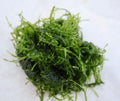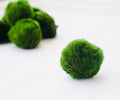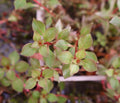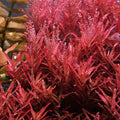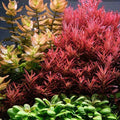Biofilm: The Essential Element for Shrimp Tanks
Setting up a shrimp tank can be an exciting venture, but patience is key to ensuring a healthy and thriving environment for your soon-to-be aquatic companions. Many people are eager to know when their new shrimp tank is ready for its residents. In this blog, we will explore the vital factor that makes a tank shrimp-ready and offer guidance on when to introduce your shrimp to their new home.
Biofilm: The Essential Element for Shrimp Tanks
When preparing your tank for shrimp, it's crucial to understand that we're not merely talking about cycling the aquarium, which involves establishing beneficial bacteria to process ammonia and nitrites. While cycling is vital for an aquarium, the focus here is on biofilm, a vital component for shrimp's well-being.
Biofilm is a slimy, invisible layer formed by a combination of algae, bacteria, and microscopic crustaceans. This layer serves as a fundamental source of food for shrimp. Shrimp will graze on biofilm constantly, making it a crucial part of their diet. Even if you plan to supplement their diet with other foods, having biofilm in the tank is a must.
The Indicator: Algae Growth
Algae growth is a strong indicator of the presence of biofilm. Algae naturally develop in any aquarium with sufficient light, and it's a natural part of the ecosystem. While many aquarium enthusiasts consider algae a nuisance, it's a vital component for shrimp tanks. If you have algae, you have biofilm. Algae serves as a food source for shrimp and indicates a healthy, thriving tank environment.
Waiting for Algae: The Key to Success
You should wait for at least 2 to 3 weeks to ensure that your shrimp is ready to go. Within that duration, you can check the growth of algae in different spots like decors, rocks, substrate, and glass.
It's essential not to rush this process, even if you're eager to add shrimp to your tank. The time invested in waiting for biofilm to develop will pay off in the long run. Rushing into introducing shrimp before your tank is ready can lead to issues such as high mortality rates, as the shrimp won't have enough biofilm to feed on.
Additional Tips for Accelerating Biofilm Development
While waiting for biofilm to develop naturally is the best approach, you can speed up the process by:
Introducing live aquarium plants from an established tank.
Using decorations, rocks, or driftwood from a tank with existing biofilm.
Using java moss, which tends to be a hotspot for biofilm development.
A successful shrimp tank is built on patience and a deep understanding of the ecosystem's needs. Ensuring that your tank has a thriving population of biofilm is essential for the well-being of your shrimp. By waiting for algae to develop and observing the growth of biofilm, you can create a suitable and welcoming environment for your new shrimp inhabitants. Remember, patience is a virtue in the world of shrimp keeping, and it will ultimately lead to a more rewarding and successful experience.
Biofilm: The Essential Element for Shrimp Tanks
When preparing your tank for shrimp, it's crucial to understand that we're not merely talking about cycling the aquarium, which involves establishing beneficial bacteria to process ammonia and nitrites. While cycling is vital for an aquarium, the focus here is on biofilm, a vital component for shrimp's well-being.
Biofilm is a slimy, invisible layer formed by a combination of algae, bacteria, and microscopic crustaceans. This layer serves as a fundamental source of food for shrimp. Shrimp will graze on biofilm constantly, making it a crucial part of their diet. Even if you plan to supplement their diet with other foods, having biofilm in the tank is a must.
The Indicator: Algae Growth
Algae growth is a strong indicator of the presence of biofilm. Algae naturally develop in any aquarium with sufficient light, and it's a natural part of the ecosystem. While many aquarium enthusiasts consider algae a nuisance, it's a vital component for shrimp tanks. If you have algae, you have biofilm. Algae serves as a food source for shrimp and indicates a healthy, thriving tank environment.
Waiting for Algae: The Key to Success
You should wait for at least 2 to 3 weeks to ensure that your shrimp is ready to go. Within that duration, you can check the growth of algae in different spots like decors, rocks, substrate, and glass.
It's essential not to rush this process, even if you're eager to add shrimp to your tank. The time invested in waiting for biofilm to develop will pay off in the long run. Rushing into introducing shrimp before your tank is ready can lead to issues such as high mortality rates, as the shrimp won't have enough biofilm to feed on.
Additional Tips for Accelerating Biofilm Development
While waiting for biofilm to develop naturally is the best approach, you can speed up the process by:
Introducing live aquarium plants from an established tank.
Using decorations, rocks, or driftwood from a tank with existing biofilm.
Using java moss, which tends to be a hotspot for biofilm development.
A successful shrimp tank is built on patience and a deep understanding of the ecosystem's needs. Ensuring that your tank has a thriving population of biofilm is essential for the well-being of your shrimp. By waiting for algae to develop and observing the growth of biofilm, you can create a suitable and welcoming environment for your new shrimp inhabitants. Remember, patience is a virtue in the world of shrimp keeping, and it will ultimately lead to a more rewarding and successful experience.



